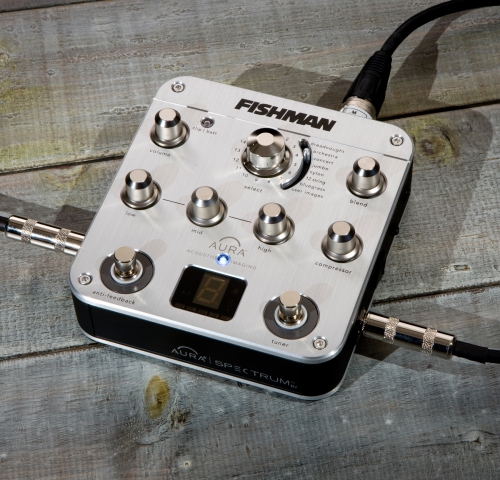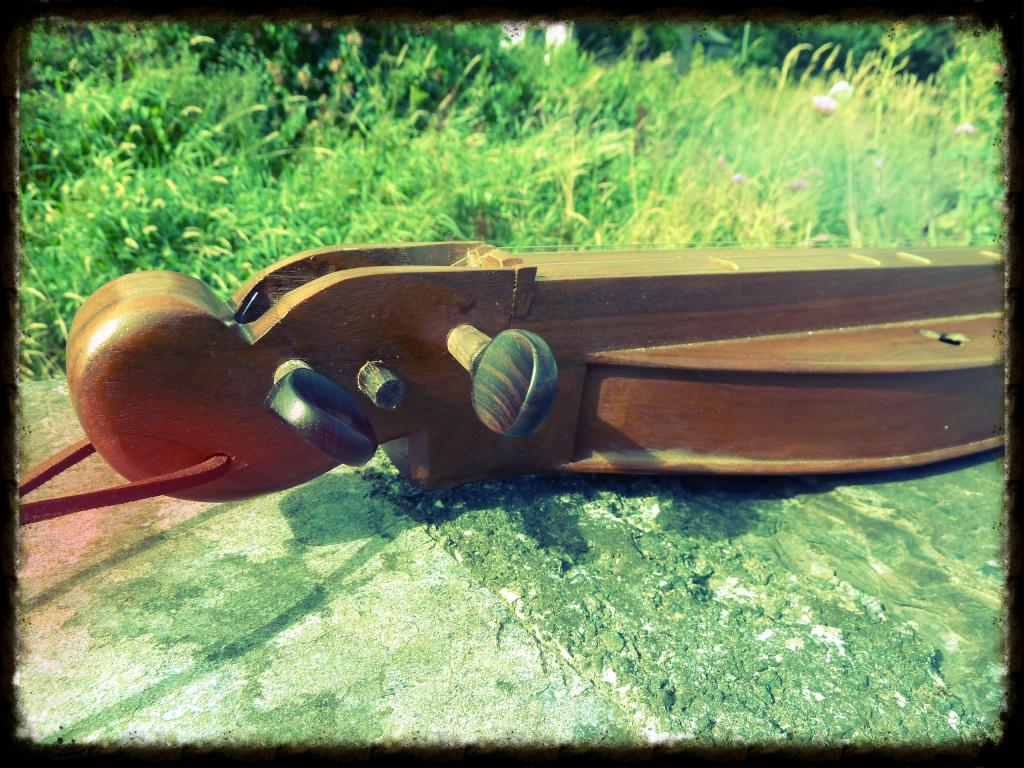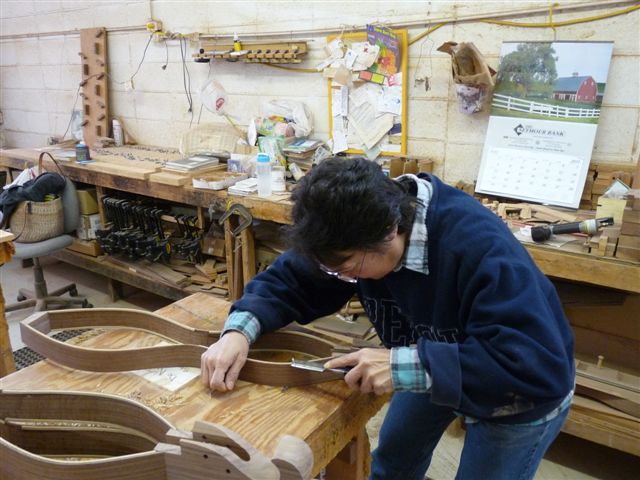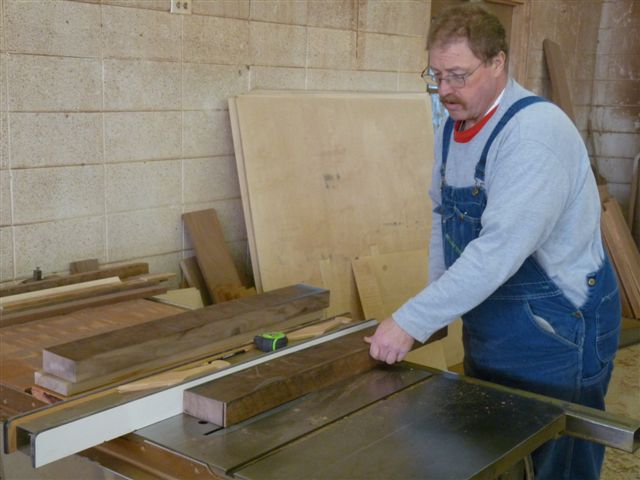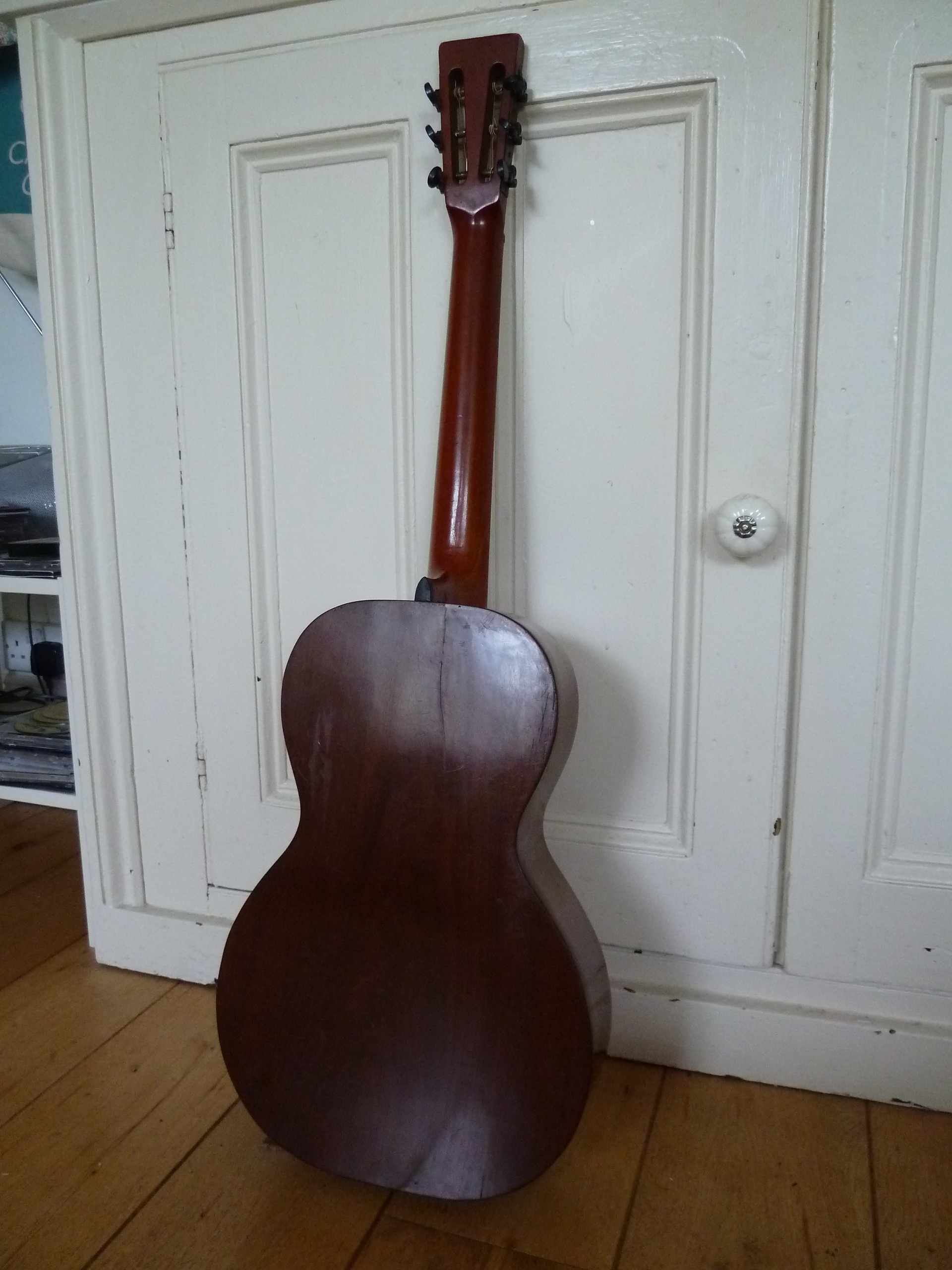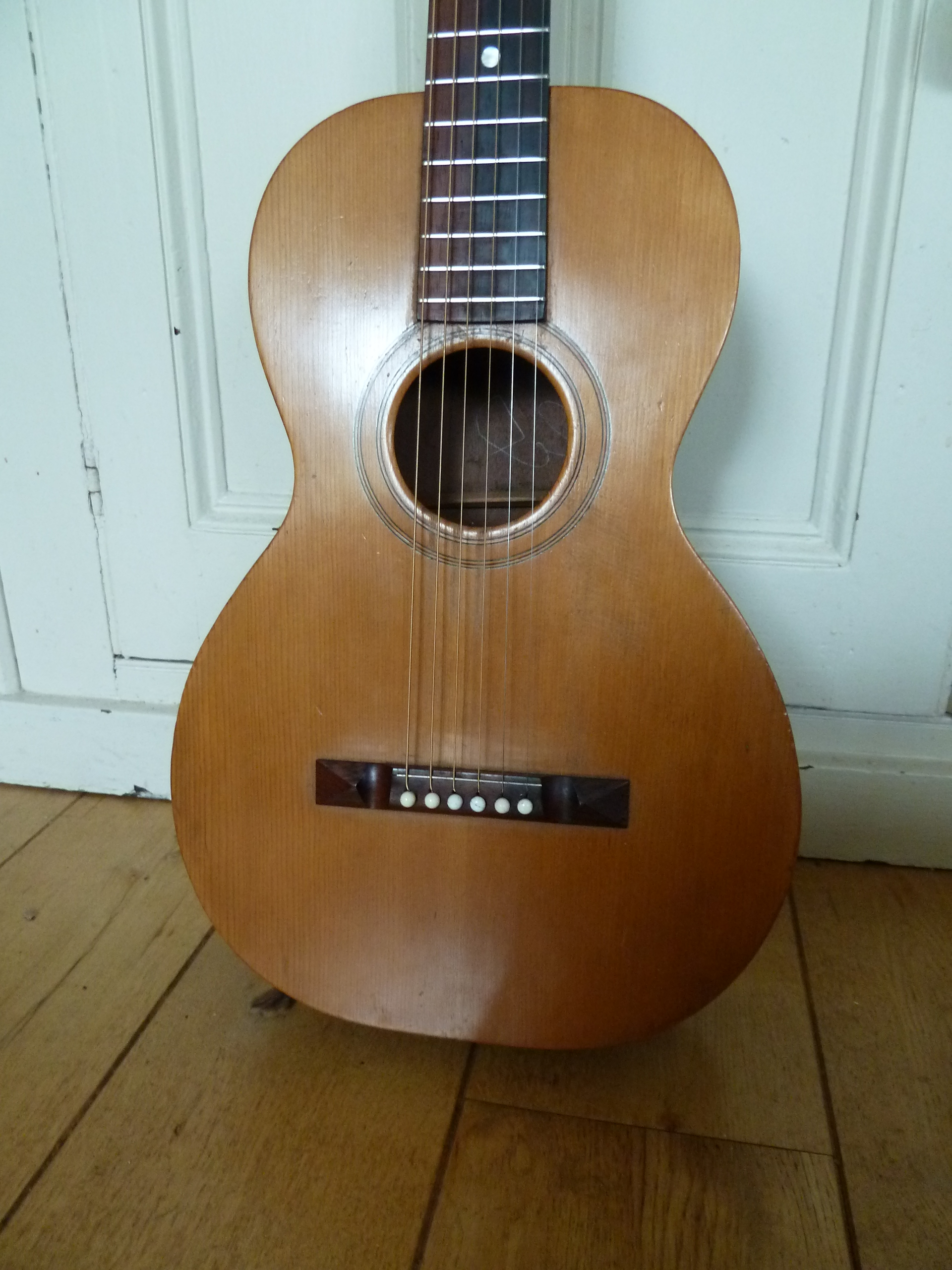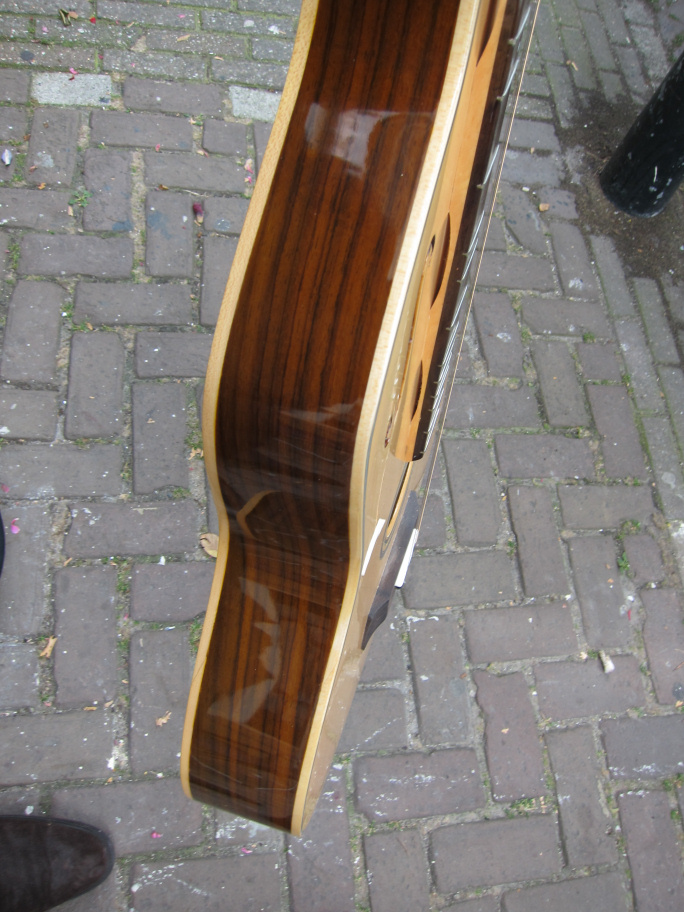Ken is right - the chords your wife will need to learn to strum along to your playing would be the same chord names that you are playing on dulcimer. She is most likely to need the guitar chords D, G, A and perhaps Bm. Any simple guitar chord chart will show her the fingering for those chords on a standard tuned guitar.
Forum Activity for @robin-clark
BBC video on unusual ancient instruments
Adventures with 'other' instruments...
This is a great article - thanks for posting it Lisa.
Last month during my ski trip across the Skarvheimen in Norway, by chance, weskied tothe Geiterygghytta mountain hut on its 100th birthday and a local Hardanger fiddle player turned up in the evening and played for us  It was wonderful to hear local tunes being played on the instrument right on its home turf. We had skied from the Hardangervidder that day. Janet Crane, who is a great old time fiddler, was with us on the trip so she got to play some Appalachian tunes on the Hardanger fiddle on a snowy winter night in a Norwegian mountain hut - how cool is that
It was wonderful to hear local tunes being played on the instrument right on its home turf. We had skied from the Hardangervidder that day. Janet Crane, who is a great old time fiddler, was with us on the trip so she got to play some Appalachian tunes on the Hardanger fiddle on a snowy winter night in a Norwegian mountain hut - how cool is that
Common Dulcimer Jam Tunes
General mountain dulcimer or music discussions
Hi Dusty - I really enjoyed reading about the Sac dulcimer group. It sounds like you have found a great way to keep everyone involved and challenged. I do think that giving beginners a few strategies for jams really helps them get engaged. If as a beginner you know that its OK to just play parts of a tune or just the chords or mute the strings and strum along in timethen you'll feel happier to experiment hands-on in the moment. And it is that experimentation that will lead to their progress.
Regarding TAB - I feel the same way about it you do  I need to hear the music to get a feel for it. What I have been doing recently however is teaching myself to readsimple melody lines offstandard music notation(most of the tunes I want to playcan be found in SMN on Google images
I need to hear the music to get a feel for it. What I have been doing recently however is teaching myself to readsimple melody lines offstandard music notation(most of the tunes I want to playcan be found in SMN on Google images  ). I say 'read' but what I actually am learning to dois to 'hear' the music on the page. TAB numbers are ugly to me - they tell me nothing about the music itself. But there is something magical about thenotes on the staff. I don't translate the dotsto note names, then find those notes on the dulcimer - that would be no better than writing out the TAB numbers. I've been working on hearing the tune as my eyes scan across the pattern. It takes me a while to hear a new tune. I have to use techniques like tapping my hand to get the timing right, or I may play a few notes on my dulcimer to get the pitch interval or a little phrase correct. But once I've got it I can then look at the music and hear the piece. I consider what I'm doing as learning to play by ear with my eyes
). I say 'read' but what I actually am learning to dois to 'hear' the music on the page. TAB numbers are ugly to me - they tell me nothing about the music itself. But there is something magical about thenotes on the staff. I don't translate the dotsto note names, then find those notes on the dulcimer - that would be no better than writing out the TAB numbers. I've been working on hearing the tune as my eyes scan across the pattern. It takes me a while to hear a new tune. I have to use techniques like tapping my hand to get the timing right, or I may play a few notes on my dulcimer to get the pitch interval or a little phrase correct. But once I've got it I can then look at the music and hear the piece. I consider what I'm doing as learning to play by ear with my eyes  It has proved to be a very useful skill to work on developing as so many of the old fiddle and folk tunes I want to play are available for free in SMN and I can learn by ear quickly as I can concentrate oneach littlephrase fast forward it, slow it down, repeat it, etc etc like I would with a recording but more instantly and just with my eyes scanning the dots.
It has proved to be a very useful skill to work on developing as so many of the old fiddle and folk tunes I want to play are available for free in SMN and I can learn by ear quickly as I can concentrate oneach littlephrase fast forward it, slow it down, repeat it, etc etc like I would with a recording but more instantly and just with my eyes scanning the dots.
Common Dulcimer Jam Tunes
General mountain dulcimer or music discussions
Buffalo Gals (easy sing along) - Shady Grove (may require capo or re-tuning though)
Pre-event jam lists are a good idea. The TAB for most of those tunes must be on the ED TAB list? So you could save yourself a lot of time and effort by picking tunes off the ED list (I think there are a couple of dulcimer clubs that also have on-line TAB sections?) and just pointing folks towards the TAB. Then if they want to learn some of tunes before the event they will have the opportunity to do so - or if they want to download it after the event.
OK - Golden rule No1: NEVER become attached to a favourite noter of pick because you will certainly break, loose or wear them out ! You know its going to happen 
I used to keep my picks and noters with my keys or my glasses - but because I can never find my keys or glasses I could never everfind my picks or noters 
So now I have them stashed in totally random places all around the house, so when I'm looking for mygloves or hats I can find picks and noters instead and forget why I wanted to out in the first place and just pick up a dulcimer and play that (much to the chagrin of my better half  )
)
But I do have the ultimate place to store my favourite picks and noters and I ALWAYS know exactly where they are  I store my favourite quill picks here...
I store my favourite quill picks here...

...on the local Black Backed Gulls. 
And I store my favourite noters here....
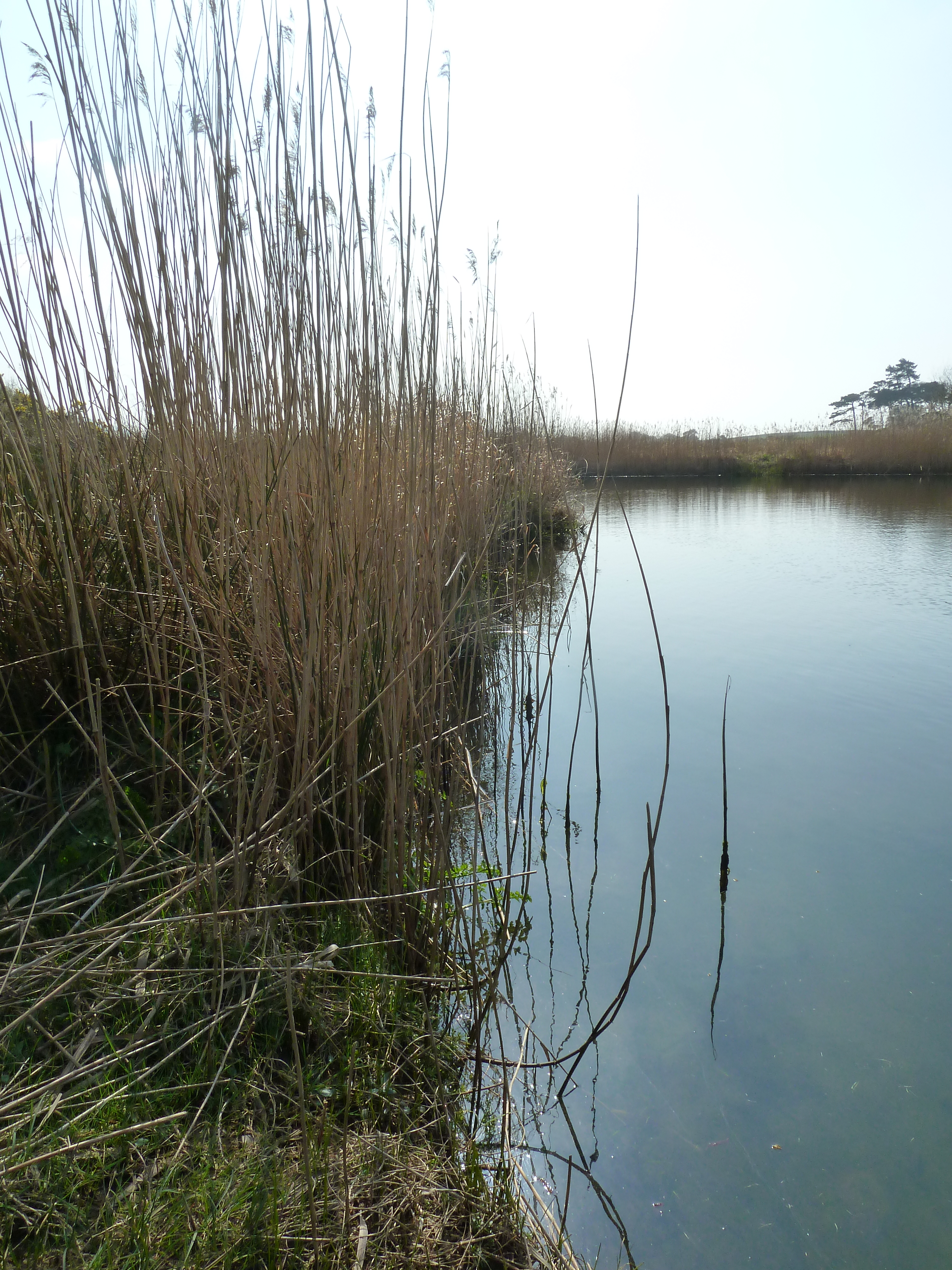 ...in the reed beds of our local river.
...in the reed beds of our local river.
So now I never loose them 
(I do like the look of those little bags though and have a couple of those little ethnic purses from Nepal with picks and noters in them  )
)
I go up to E with a 0.022w on my McSpadden. And like Robin T I've used a false nut for some applications. In fact all the tunes in the key of G on The Cadair Idris Sessions were played in Ddd with a false nut under the bass string at fret 3 to give Gdd (a nice bright tuning). Note though that a false nut only works for noter drone playing as it raises and throws out the intonation of the string for fretting - this is why 95% of players have not heard about a false nut as they would be unable to use one for chord melody playing styles.
Strung out and needing advice
General mountain dulcimer or music discussions
Hi Ellen,
Do you have a photo of your dulcimer - I'd like to look at the set-up you are using.
It is interesting that the maker designed the instrument for Gdd tuning and a short scale. There were a lot of old dulcimers that were pitched up to the key of G, particularly those with a slightly shorter scale - and that can give an instrument a really bold voice. You don't need to drop to the key of D if you like the instrument's voice in G. There are ways around that issue. For example you could tune to GDg with the right string gauges on that 24" VSL and still follow all the DAd TAB and lessons (you just pretend you are in DAd and everything works out fine but you are in a higher key). If this is the dulcimer you bought from your local friend who build it you could get him to help you set it up to playperfectly inthe style you want - I'm sure he would help you get absolutely the best tone and playability from the instrument for your prefered playing style.
Your "Dream Dulcimer?
General mountain dulcimer or music discussions
Awww shucks - I've been rumbled 
Like most folks my dream dulcimer is whichever one I have in my hand at the time. I have a good (and growing  ) collection of instruments many copies of old designs or old originals. Each has its own special characture and I love them all
) collection of instruments many copies of old designs or old originals. Each has its own special characture and I love them all 
I have a few more old original designs I'm still chasing- not because they are individually my dream dulcimer but because they have the distinct timbre I want to add to my quiver of instruments. And as John Tose says above, there is something VERY special about handling and playing old dulcimers 
So perhaps, for me, it is not about my 'dream dulcimer' but my 'job specific' dulcimer. I'd just got back from an open mic' last night when I posted about the Fishman Aura Spectrum with the sound modelling from all my favourite dulcimers loaded on to it and a loop pedal plus effects box. I'm the sound guy for the open mic'in the bar of ourlocal cinema each month. The film finished earlier than usual and no musicians had turnedup (typical  ) but a small audience had rolled in early. For the first time at the event I hada dulcimer with me because I hoped Ella may be along later and I thought I'dask if she fancied singing The Blackest Crow (we didthe songlate on in the evening and it went down great
) but a small audience had rolled in early. For the first time at the event I hada dulcimer with me because I hoped Ella may be along later and I thought I'dask if she fancied singing The Blackest Crow (we didthe songlate on in the evening and it went down great  ). So I grabbed my dulcimer and just played a few tunes while waiting for the first act to show up. The instrument I had with me was my cherry McSpadden and I just used a directional condensor mic' to amplify it through the p/a. The dulcimer sounded sweet but I would have liked a few other timbre options after a couple of tunes. It was then that I thought how useful a 'plug and play' dulcimer would be for small venue performances and coffee house work. Something the size of an A W Jeffries would be ideal ( shallow withthat beautiful WV hourglass shape), I'd want a 26" scale with a good p/u system built in to it, no 6+ and Perfection pegs, action and fret intonation set for noter drone playing. I actually wouldn't want too much voice in terms of acoustic volume (the Jeffries size/sound would be perfect) - just a nicely balanced natural sound that the p/u system would work well with - a semi-acoustic dulcimer if you like. The p/u would probably be an LR Baggs as I don't want handling noise.
). So I grabbed my dulcimer and just played a few tunes while waiting for the first act to show up. The instrument I had with me was my cherry McSpadden and I just used a directional condensor mic' to amplify it through the p/a. The dulcimer sounded sweet but I would have liked a few other timbre options after a couple of tunes. It was then that I thought how useful a 'plug and play' dulcimer would be for small venue performances and coffee house work. Something the size of an A W Jeffries would be ideal ( shallow withthat beautiful WV hourglass shape), I'd want a 26" scale with a good p/u system built in to it, no 6+ and Perfection pegs, action and fret intonation set for noter drone playing. I actually wouldn't want too much voice in terms of acoustic volume (the Jeffries size/sound would be perfect) - just a nicely balanced natural sound that the p/u system would work well with - a semi-acoustic dulcimer if you like. The p/u would probably be an LR Baggs as I don't want handling noise.
I think that, with a loop pedal, effects pedaland some modelling software I could have a compact little system for small venue gigs that would give me great timbre variety possibilities from tune to tune - plus I could overlay harmonies live. Now this may have Ed Thomas turning in his grave - and nothing will be the same as playingtraditional instruments acoustically live (my absolutepassion  ) - but pragmatically I could do with a halfway house so I can play noter drone style for a full set from one instrument to a non-dulcimer audience - and also jump in to back up other musicians whoes acoustic guitar etc are plugged in to the p/a. All in noter drone style of course (is there another way to play?).
) - but pragmatically I could do with a halfway house so I can play noter drone style for a full set from one instrument to a non-dulcimer audience - and also jump in to back up other musicians whoes acoustic guitar etc are plugged in to the p/a. All in noter drone style of course (is there another way to play?).
So I'm not talking about my dream dulcimer here more my 'job specific compromise dulcimer' - simply a pragmatic musician's tool for a specific task. Anyway, I may be commisioning a new dulcimer soon  I really need to get out and play some solo gigs next year!
I really need to get out and play some solo gigs next year!
Your "Dream Dulcimer?
General mountain dulcimer or music discussions
Well, you are going to be shocked at this one - but here is my dream dulcimer 
To go with the Aura Spectrum DII'd want a trip to the Fishman studio with a full range of original old dulcimers (Thomas, Prichard, Presnell, Tignor, Glen, Ledford, Ambergy, Mawhee, Melton etc etc) to get them all recorded and added to Aura image gallery. Then I'd have a dulcimer built for noter drone playing with a well banalced but acoustically quiet sound and a Fishman p/u. And that dulcimer with the Aura and the Bose L1p/a would be my stage set-up:
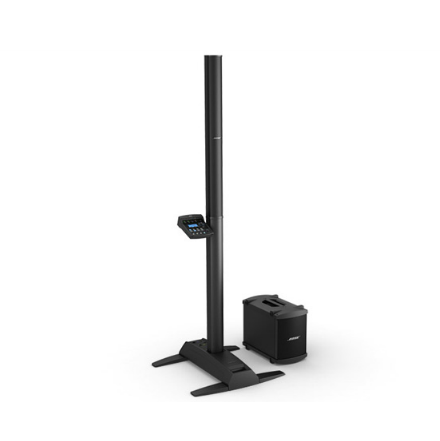 I'd have a loop pedal and general acoustic effects box (reverb, echo, chorus etc).
I'd have a loop pedal and general acoustic effects box (reverb, echo, chorus etc).
I don't think I would see any change from $5000 for my custom dulcimer and stage rig - and that's before adding the cost of sampling the old dulcimers in a good studio to get them loaded on to the Aura Spectrum - so perhaps it will have to stay a dream 
How Many
General mountain dulcimer or music discussions
Oh Well, here goes - in no particular order:
All played noter drone unless otherwise stated - no 6+ on any dulcimers unless stated
Ed Thomas replica by John Knopf - classic 1890s small bodied poplar 3 string - silvery and intimate
Charles Prichard replica by Kevin Messenger - classic 1880s large bodied poplar 3 string - loud and strident
McSpadden 4FHCC by Jim Woods(custom with no 6+) - 2011 - great workhorse - keep it in 4 string equidistant
Prussia Valley Box Dulcimer by Gary Sager - 3 string zither pins - 2007 - rich and rounded
John Tignor - Kentucky style 3 string 1960s - rings like a bell
John Pearce - 1970s small delta 3 string - very pretty with lots of rich overtones from a small body.
McSpadden Ginger(standard with 6+) - punchy little instrument that I use for chord melody. Great for jam sessions
Richard Wilson 1981 4 string- very lightly built hourglass - full sound - kept in 4 string equidistant.
A W Jeffries by Jay Jeffries - West Virginia hourglass 1970s - light shallow build with mid range focus
Sow Hoggfiddle by Bobby Ratliff - Classic Virginia pattern from 1800s - Bright and lively for both dancing and hymns
Galax by David Lynch 2011 - staple fretted in Melton style with 6+- Great old time pub session instrument
Galax by Don Neuhauser - Russel family pattern built for Bonnie Russell -VERY LOUD - THE dulcimer for dance sessions
8 x David Lynch Student Dulcimers (with 6+) - perfect for running workshops
On the 'wish list' when I raise the cash!!!!:
Ed Presnell 3 string
Replica of ID Stampers long scale 4 string (someone needs to find the original first to take a pattern!!!!)
Mawhee/Graves walking cane dulcimer
Other instruments - 2 x squareneck dobro (my primary stage and sessioninstruments), about 5guitars, bass, 4 x banjos, purcussion various, Welsh harp, harmonicas various, mandolin, lap steel and I'm sure there are a few more instruments scattered around the house.
Oh - and about 30 x resonator guitars in stock for my business at present anda dozen or sodulcimers

1930s Regal Tenor Guitar
Adventures with 'other' instruments...
Thanks Bobby 
I think that the shape of the body makes the guitar look bigger than it is. It only has a 23" scale and narrow deep C neck but it looks like a jumbo guitar! The body is quite compact and smaller than many tenor guitars I've seen. I've not seen another one this shape though ?
1930s Regal Tenor Guitar
Adventures with 'other' instruments...
Thank you all for your comments 
I feel very lucky that this tenor guitar found its way to me as I wasn't looking for one. I was given the instrument in a trade for one of my resonator guitars - in fact I was given this tenor guitar, a Frank Profitt and an Ellis Wolf mountain banjos and an 1890s Essex banjo. All are wonderful instruments in their own ways. And, Helen, I'm going to see if I can use them all on the CD project. It is taking some time to put it all together but I'm working on it little by little when time allows.
1930s Regal Tenor Guitar
Adventures with 'other' instruments...
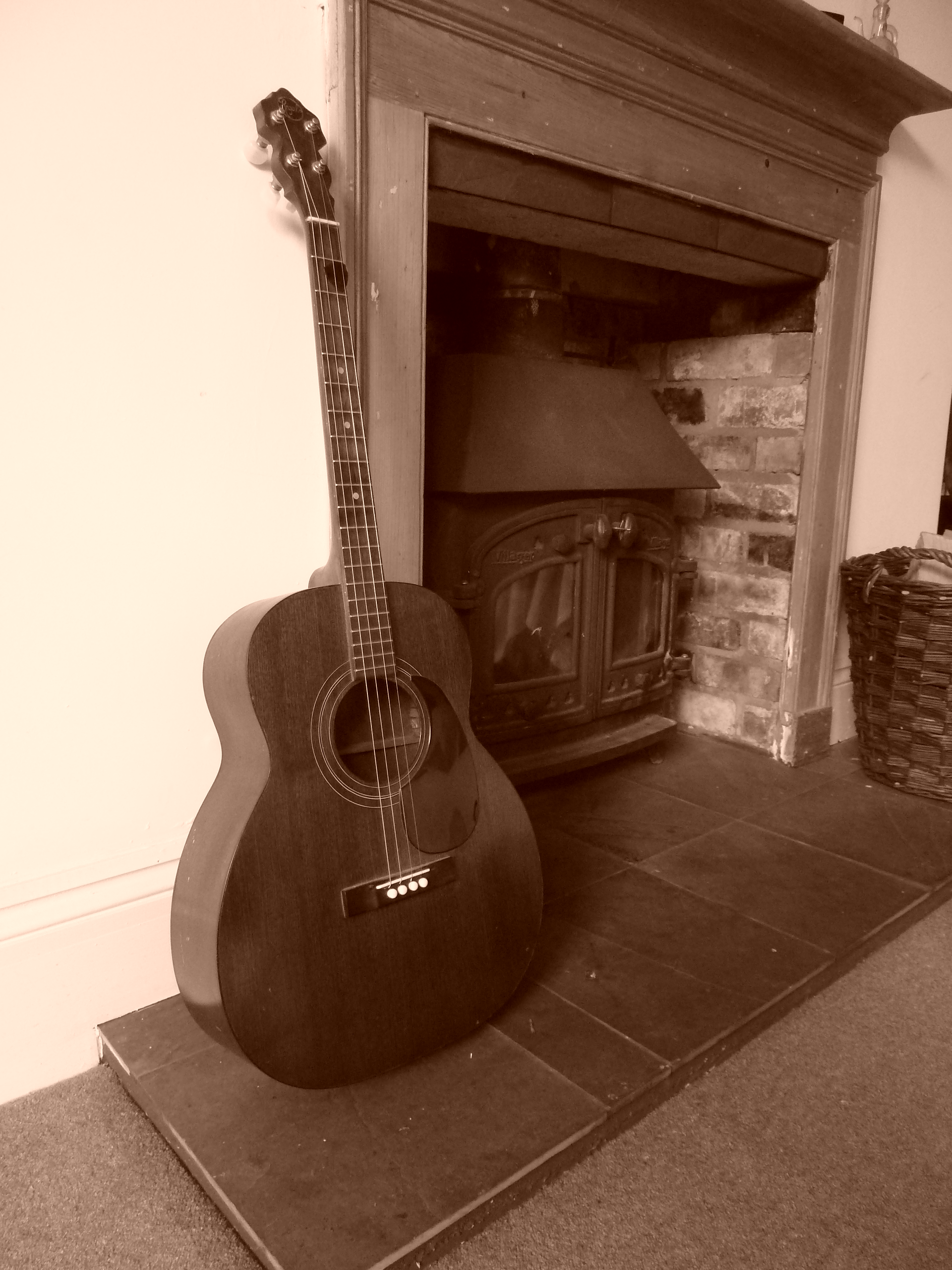
I got this beautiful 1930s Regal tenor guitar in a trade a couple of weeks ago. They are usually tuned in climbing 5ths like a mandolin but starting with a C. But I thought I'd tune it instead to DAda and just play melody over drones on it  So there you go - rather than trying to play a contemporary dulcimer like a contemporary guitar. I'm trying to play and old guitar like an old dulcimer
So there you go - rather than trying to play a contemporary dulcimer like a contemporary guitar. I'm trying to play and old guitar like an old dulcimer  I'msort ofgetting the hang of playing the instrument with just one finger!!! I may get as far as two finger playing some time
I'msort ofgetting the hang of playing the instrument with just one finger!!! I may get as far as two finger playing some time 
updated by @robin-clark: 08/01/23 07:53:41PM
Folkcraft dulcimer questions
Instruments- discuss specific features, luthiers, instrument problems & questions
Hi Steven,
I have had two of that exact model pass through my shop this year. They were great sounding and great playing dulcimers - nicely set-up and well finished. They were good all-round instruments and I felt the model was particularly nice for fingerstyle playing. You have made a good choice 
Robin
Hi Barbara,
One of the confusions when it comes to mode names and tunings is the darn 6+ fret  . Although D,A,d or 1-5-8 is called a'mixolidian' tuning a good 95% of dulcimer players actually play 'ionian' tunes from that tuning using the 6+ to give do, ra, me, fa, so ,la, te, do from the nut. Without the 6+ the ever popular DAd tuning would be a pain in butt to use as the scale then becomes do, ra, me, fa, so ,la, te (flat), do - the true mixolidian scale and the cause of the naming of the tuning. It doesn't help that companies like McSpadden still refer to 1-5-8 as 'mixolidian' and untertake set-ups and sell string sets for 'mixolidian' - the pragmatic reality is that 1-5-8 has simple become 'ionian' from the nut on contemporary dulcimers.
. Although D,A,d or 1-5-8 is called a'mixolidian' tuning a good 95% of dulcimer players actually play 'ionian' tunes from that tuning using the 6+ to give do, ra, me, fa, so ,la, te, do from the nut. Without the 6+ the ever popular DAd tuning would be a pain in butt to use as the scale then becomes do, ra, me, fa, so ,la, te (flat), do - the true mixolidian scale and the cause of the naming of the tuning. It doesn't help that companies like McSpadden still refer to 1-5-8 as 'mixolidian' and untertake set-ups and sell string sets for 'mixolidian' - the pragmatic reality is that 1-5-8 has simple become 'ionian' from the nut on contemporary dulcimers. 
Hi Barbara,
The melody strings may be a little slack tuned down a tone to c - just give it try though as it won't do any harm.
I know what you mean about the dulcimer and music theory!!! I played varoius instruments for many years before discovering the dulcimer. And this 'simple' instrument hascaused me to learn way more theory than I knew before - plus it is the only instrument I play where I have felt I needed to learn to read music because it is a useful skill.
Amazing Grace in Minor key
General mountain dulcimer or music discussions
Thanks Sharon and Dusty !
I really enjoyed sitting down yesterday evening with that short clip of Willie Nelson and seeing what I could come up with on that old Tignor dulcimer.
I still feel that I'm just scratching the surface of what's possible on an old dulcimer with a noter. The more I play these early dulcimer designs the more admiration and respect I gain for those traditional players and builders of these 'boxes of possibilities' 
Amazing Grace in Minor key
General mountain dulcimer or music discussions
Hi Sharon,
I found a short clip of the Willie Nelson version of Amazing Grace from Songbird on Amazon. He is singing it in Em and using accidentals. I've had a quick go at the tune and tried to capture the same sort of feel. I used E,B,A tuning on my old Tignor staple fretted dulcimer and a hardwood noter to capture the accidentals. As I'm playing noter drone I don't have the chord changes that are on the Nelson version but I've tried to get the same sort of lilt in the melody. I've added some pick up notes to each phrase so the sound is not quite so sparse.
levers on a dulcimer?
General mountain dulcimer or music discussions
You may to better replacing the tuners Dusty with Scruggs or the guitar/bass equivalent tuners that have fast adjust levers to move the pitch. I'm sure I've seen some electronic ones for guitar that shift the tuning for you. On the other hand it is probably easier and far cheaper to simply install extra frets!!!!
Of course, if you just want accidentals in a tune (rather than full key changes mid tune) then noter players have been snatching those between the frets on pure diatonic dulcimers for a long, long time - it is a pretty simple technique patricularly on an old staple fretted dulcimer with a high action
Dean - I think thatif you switch your question around you will have the answer. Ask yourself: "What makesfolks NOT look at the fretboard? "Traditionally the instrument would have been played by ear, mostly for personal or family entertainment (ie not withmusic or TAB orfor an audience or withother band members or a conductor). Quite simply, there was no reason NOT to look down at the instrument. Those of us who play mostly by ear at home are likely to look down at the fretboard more than those who use TAB or music or who play with other musicians orplay gigs. Not looking down is a learned skillso there has to be some intrinsic motivation to cause that learning to take place.
I have noticed in myself that I look down at the fretboard when I play most of the time and that my playing is based on visual pattern movement. However, when learning a new piece from music I follow the music and play by feel (missing the odd fret and looking at the big jumps) - because the skill of not looking is useful when reading music. When I play in a string band (quite regularly), I will perhaps look down when soloing but look up and around at the other players when playing backing - because the skill of not looking down is really useful when playing with others. So it is the demands of thecontex the will drive whether or not a player hasneeded to learnto play head up or head down - and I think that has come across in all the previous replies to your question. If you play by music or TAB you will need to not look at the fretboard. If you play with others you will need to, at times, not look at the fretboard. If you play by ear primarily for yourself then learning the skill of not looking is not important.
Right from the very earliest days of mountain dulcimer playing you will see this reflected in photos:
Ed Thomas strumming away on a porch somewhere, lost in his music and......looking down  He had no reason to learn to do otherwise
He had no reason to learn to do otherwise 
Dean Patrick Preising said:
.....I still find it interesting when I look at pictures, most people are staring intently down at the fret board, while people playing other instruments are not.
Dean
Hi Mike,
That TK O'Brian was my first dulcimer and I loved it  I've just passed it on to another beginner and hopefully they will get another few good years out of it too. I used it as a loan instrument for a while and enevitably someone else fell in love with it and asked to buy it!!! I tracked down the workshop who built the instrument for the TK O'Brian brand. They are made by the Hagen family in Ozark. Chas buys in billets of wood from his local lumber yard and they quartersaw and plane the planks themselves. I was so impressed that when I started my dulcimer business over here in the UK I asked the Hagens if they would build a model for me - so they make me the Red Kite which I sell in the UK and Europe.
I've just passed it on to another beginner and hopefully they will get another few good years out of it too. I used it as a loan instrument for a while and enevitably someone else fell in love with it and asked to buy it!!! I tracked down the workshop who built the instrument for the TK O'Brian brand. They are made by the Hagen family in Ozark. Chas buys in billets of wood from his local lumber yard and they quartersaw and plane the planks themselves. I was so impressed that when I started my dulcimer business over here in the UK I asked the Hagens if they would build a model for me - so they make me the Red Kite which I sell in the UK and Europe.
I'm really proud to be working with such a great family and helping them get their instruments over on this side of the Atlantic. In fact, all the small US dulcimer workshops and individual luthiers I deal with are great people - it is a fantastic community and one where artisan instruments make up the lion's share of the market. The big name instrument makers who mainly build now in the Far East can't really get a look in with dulcimers because the artisan small workshops andluthiers in the US do such a great job. It isheartwarming to find something left in the world where the big companies are kept out of the market because they know they can't compete with the qualityor price that the artisans can produce.However, the one thing that the small workshops and independant dulcimer makers can't afford is an advertising budget soit is up to us players to keep spreading the word and supportingour artisans

'Reletive tuning' is tuningthe strings to each other Mike rather than tuning them to a regulatedexternal source like an electronic tuner or pitch fork. Use your electronic tuner to get close to the tuning you want then blend the strings to each other by ear. You'll find that the instrument will end up in tune with itself and sounding great but you may actually be pitched at say a little flat of the key of D or whatever ie not exactly at a definitive pitch. If you have a look at the tunes I've posted in the Old Style NOter and Drone section of the forum you'll see that quite a few will say something like DAA (just a little sharp) or similar. When you listen to old recordings of folks like Jean Ritchie you'll find that her dulcimer wasn't tuned to an exact pitch either - it varies quite a lot as she would have just tuned it to itself throughout the recording session so it varied a little from song to song.
If you can find another bead then I would add it to the string that's missing one at present. It will help you with those final fine adjustments.
Robin
Here is a bit of a radical idea for your 3rd old dulcimer Cindi. How about stringing it up with 4 melody strings (4 x 0.010) and tuning them all to 'd' so you have a dulcimer in d,d,dd like a Galax dulcimer is tuned. It may sound crazy but for sessions you won't miss the bass strings as the other instruments (like guitar) will over power your bass string anyway. In d,d,dd your dulcimer will 'froth' along at the top of mix providing a very audible rhythm. If you listen to some of the tunes played by Phyllis Gaskins with her string band you'll hear how this tuning works when played with others.
The tuning d,d,dd means that you can play in the key of D with a noter or by fingerdancing starting the scale at the nut or play in the key of G starting at the 3rd fret (over d,d drones) - without retuning. If you put a capo on the first fret you can play in the key of A, both major and minor depending on your use or not of the 6+, starting the scale at the 4th fret and playing over e,e drones.
When I go to sessions (quite regularly!) I always carry a Galax tuned dulcimer, and it is the tuning I use the most as the sound carries really well because your dulcimer is sitting in a unique part of the sound spectrum. You need a quick right hand to whip up a rhythm - my preference is to use a quill and whip it across the strings.
It is just an idea - but if you do have an old dulcimer doing nothing at present then it could be fun to set it up in Galax tuning and have a go with noter and quill. 
Robin
Hi Cindy,
I tend to use noter drone for bluegrass and old time sessions. It would take a while to get the hang of it if noter drone is not your style of playing at present but it does givesome significant advantages -tuning flexibility andmore volume being two. There's a fair bit of evidence of pre-revival dulcimer players in some communities playing is string bands using noter drone, and the style fits nicely with old time and bluegrass.
Instrument set-up . You can do a couple of things to make life easier for yourself. I tend to go a little lighter on the bass string so it will tune up to E (a 0.022w works fine on a 28.5" McSpadden) and run the middle and melody strings at the same gauge - normally 0.012 on a 28.5" scale. Also, I only use a single melody string at sessions as this speeds up re-tuning and gives a nice clarity to the melody line. Go a little stiffer on your pick to add volume too. A strap and possum board is a good idea.
Tunings . There's a page on how to get into the standard session keys here:
http://mountaindulcimer.ning.com/group/oldstyledronenoterplayers/page/tunings-for-noter-drone-beginner-intermediate
If you usually play out of DAd in chord melody style it is quite a mental shift to move to noter drone, and perhaps not as easy as it sounds. But with a bit of practice you'll soon be whistling along with a noter at sessions. Personally, I play both styles and enjoy chord melody from DAd as much as anyone. All I'm saying is that I've found noter drone a better playing style for me when sitting in at bluegrass and old time jams.
Mmm...
With a 24" scale I'd be inclined to go the other way and tune the instrument UP to Gdg. The problem with thick strings on a short scale tuned down is that the strings tend to 'thud' rather than 'ring' - there is just not enough string length compared to itsthickness to get the string vibrating and sustaining well. It is no accident that the early dulcimers tuned to DAA/CGG etc were around 28" scale and those tuned d,d,d,d were 26" and the McSpadden Ginger tuned G,d,g is 23.5". Note also that bass guitars and bass fiddles have longer scale lengths as well as thicker strings. You can't really go against the laws of physics (which instrument builders have been using for centuries) and expect it all to work fine. So my advice would be to re-think your 24" scale dulcimer and give up on DAd (or DAd down an octave) and re-work it as a nice bright short scale instrument in G,d,g. That way you can get the correct match between scale length, string thickness and string tension for the strings to work at their very best on an instrument of that size. And you would also be matching the playing pitch to the internal body volume you have available so the whole thing will sound much sweeter.
Robin
1920's Parlour Guitar Rescued
Adventures with 'other' instruments...
Oh Lisa that's a wonderful instrument  And I just LOVE the case!!!!
And I just LOVE the case!!!!
My little parlor (US spelling!) guitar would have been originally steel strung. It is braced for steel strings and this is typical of the Oscar Schmidt guitars of this age.
1920's Parlour Guitar Rescued
Adventures with 'other' instruments...
Thanks 
Rob - I have a lots of old blues tracks on various CDs but really haven't listened to them for quite a while - I sort of moved into old time and bluegrass. Perhaps I should fire up a few tunes by the old blues masters and have a listen again. There wasquite a swirling mix of music in the southern Appalachians around the 20s with influences of the blues coming in to 'hillbilly' music.
Just out of interest - I've fitted a set of heritage strings to the guitarthat are made by Newtone Strings in Derbyshire. I know Malcolm Newton and often chat to him on the phone as I order about 1000 strings from him each year for my guitars! The heritage sets have thinner round core wires and so come up to pitch at a lower tension. Hopefully my little parlour guitar's neck will appreciate the lower tension and stay stable without warping for a good few years! Here is a link to Newtone Strings.
1920's Parlour Guitar Rescued
Adventures with 'other' instruments...
I picked this lovely little vintage parlour guitar up on Ebay about 4 years ago in a sorry state (and for not much cash at all  ). A friend of mine took it to bits (not difficult as it was in bits!) and has put it back together. It is an incredibly light guitar with mahogany back, sides and neck and spruce top, the top and back are ladder braced. The neck is a lovely 20s thick C profile with no truss rod and the tuners are the old 'reversed' style (giving a clue to the date). Although the instrument has no label left inside a lot of research bought us to the conclude it is indeed from the Oscar Schmidt factory - the bridge shoulders being the significant marker.
). A friend of mine took it to bits (not difficult as it was in bits!) and has put it back together. It is an incredibly light guitar with mahogany back, sides and neck and spruce top, the top and back are ladder braced. The neck is a lovely 20s thick C profile with no truss rod and the tuners are the old 'reversed' style (giving a clue to the date). Although the instrument has no label left inside a lot of research bought us to the conclude it is indeed from the Oscar Schmidt factory - the bridge shoulders being the significant marker.
It is a really lovely little instrument to play and from the pick marks on the body it has seen some good use over the years. It is not a valuable instrument or collector's item but rather a simple player's delight. She has a wonderful voice and, whilst I'm not any sort ofguitar player at all, I am enjoying finding my way around the fretboard of this great little instrument. I haven't picked up a guitar for the simple enjoyment of playing for years although I handle them every day for my job, which I suppose is why I don't play guitar anymore!!!!!! Anyway, perhaps this instrument will rekindle my interest. Here is a little soundclip of the beauty that I've just recorded.
updated by @robin-clark: 04/13/18 07:26:00PM
The third hurdle was string buzzing. What was odd at first was it was erratic. I experimented with bridge height a little but the final solution turns out to be loose frets. When I inspected each fret wire I noticed slight movement of the fret within the fretboard on some frets. There appears to be drying out of the fretboard due to winter dryness and the wood is "unswelling".
This is quite common on cheaper Chinese import instruments Sam (and some more expensive ones too!). The rosewood used is often quite 'young', the fretsaw blades blunt/too wide and the humidity in China when the fretboards are made being much higher than a US winter.One fix is to use asmall drop of very low viscosity superglue (the industrial stuff that isas thin aswater and sets in 1-3 secs) run under the fret, thenpress andholdthe fret firmly down for 20 seconds or so with something like a small hammer head. You can easily re finish the fret board afterward if needed by lightly filing or sanding off any glue marks then using 000 and 0000 wire wool followed by a very light rub of lemon oil. I think I've had to do this on somewhere near 400 various Far East guitars so far as part of my job  Mind you, it is also a 'trick' that I've had to use on a couple of old US pre-revival dulcimers that had the odd loose fret in order to get the fret 'singing' again.
Mind you, it is also a 'trick' that I've had to use on a couple of old US pre-revival dulcimers that had the odd loose fret in order to get the fret 'singing' again.
Hi Frank,
I missed this post of yours yesterday. But I see I have said very much the same thing about contracted out building in the Far East. I have been designing, placing orders and importing resonator guitars from the Far East for about 6 years. It is a laborious and risky process  . I'm at the point where I have literally one named technician who I trust to inspect parts and undertake assembly- I do all the finishing work in my workshop which takes around 4 hours per instrument, sometimes longer. I have had around 1000 instruments across my work bench- and I'll be at it again today. The downside is it is hugely time intensive to getmy guitars right - and I couldn't live off what I earn (I don't need to, which is why no one else does what I do!!!). The upside is that I work form home when I want to and if the sun is shining I go for a bike ride and if the surf's up I go surfing
. I'm at the point where I have literally one named technician who I trust to inspect parts and undertake assembly- I do all the finishing work in my workshop which takes around 4 hours per instrument, sometimes longer. I have had around 1000 instruments across my work bench- and I'll be at it again today. The downside is it is hugely time intensive to getmy guitars right - and I couldn't live off what I earn (I don't need to, which is why no one else does what I do!!!). The upside is that I work form home when I want to and if the sun is shining I go for a bike ride and if the surf's up I go surfing  I don't need to advertise,the musicians I supplydo that for me, and I always have a full order book stretching a couple of months ahead.
I don't need to advertise,the musicians I supplydo that for me, and I always have a full order book stretching a couple of months ahead.
So Gold Tonesinconsistencies with these batches come as no surprise.
It is great to hear that you are taking the trouble to inspect and set-up the instruments you sell Frank - Good for you!!! That'ssuch an important service for musicians
Marg - The best that Gold Tone could probably manage is an inspection to check that all is well and that the instrument could be set-up for the needs of a player - there just is not the margin in this type of business for anything else at the price. Guitarists are very used to buying an instrument off the shelf and at the same time paying themusic shop's technician to set it upfor their style of playing. Even if you bought a new Martin D-28 guitar made in the USA for a retail of $2000the instrument would need a set-up!!!!!I sounds like Wayne should be able to take the action a little lower for you and show you how to change your strings.
Frank Ledgerwood said:
Now to the Dulciborn. I was fortunate in the fact that I went several times to GT and hand picked the D'borns I sold. I would select maybe 1 out of every 4-5 I looked at and then I set them up. A couple that got past me as when all mine would be sold and I would have an order where I couldn't drive 1000 miles rt to set up 1 instrument...
A quick overview. Gold Tone does not build any instruments. With the Dulciborn, Wayne worked with a Weissenborn contractor to build a finger board/fretted version. Something this contractor had never done but the only builder who agreed to try this. Thru many prototypes, they came to a working version that Wayne was satisfied with and gave the nod. Now fast forward to a shipment of a hundred Dulciborns that are not quite spec'ed as the agreed upon prototype.....The first batch had somewhat rough fret boards, high action and were fixed as best as possible. My personal D'born is one. The second batch had a cleaner board, but there were inconsistencies in every instrument from strings not aligned with fretboard to a sloping/twisting of the fret board(sounds like the one you played), which required a complete removal of frets, leveling of board and re-installing of frets. This batch is the most prevalent out there. I was down there when the prototypes (for a third batch) came in that addressed the fret board issue. The probable main cause was in the scalloped fret board not having enough integrity to stay true/flat and a weissenborn body that had minimal bracing to support/maintain a flat raised and fretted board. Weissenborns are not fretted and played with a slide. Frets are just markers and a slide is used. The new batch has corrected the string height problem. I waited to see a consistency in this group, which I have so I have my first ones coming to me this week. There was talk to discontinue the Dulciborns which I'm glad didn't happen as there are many happy owners, despite the growing pains. I tried once to find the most affordable Weissenborn builder to build a body any I would finish with Fret board and bridge. He wanted $1500.
I found this photo of a dulciborne on the internet. The saddle is sitting really high.
I know a bit about Weissenborns and a bit about dulcimers and a bit about Chinese instrument manufacture of Weissenborns - long story, but I run a small specialist guitar business and have had Weissenborns build for my businessin the past.
Original Weissenborns (1920s) have a slightly higher bridge than acoustic guitarsbut not a higher saddle (as shown in the photo of the dulciborn above). In fact, on an old Weissenborn, the break angle across the saddle is the same as a standard acoustic guitar. Here is a photo of a 1920s Weissenborn:
 The high saddle on 'out-of-the-box' Dulciborns does not surprise me at all. I have seen numerous Chinese Weissenborn copies with an unnecessarily high saddle dropped into the bridge slot at the factory. It is an easy job to lift out the bone (or plastic) saddle, mark a pencil line across it about a 1/16" from the bottom, place some sandpaper on a flat surface and sand off to the line. Then re-fit the saddle and test the height of the action. Keep going as required until you get the action you want.
The high saddle on 'out-of-the-box' Dulciborns does not surprise me at all. I have seen numerous Chinese Weissenborn copies with an unnecessarily high saddle dropped into the bridge slot at the factory. It is an easy job to lift out the bone (or plastic) saddle, mark a pencil line across it about a 1/16" from the bottom, place some sandpaper on a flat surface and sand off to the line. Then re-fit the saddle and test the height of the action. Keep going as required until you get the action you want.
What does surprise about the Dulciborn is the use of a raised fretboard which requires a higher bridge? I know the raised fretboard is a significant feature of the traditional dulcimer and very useful if you are a noter drone player - but in this case it seems like over engineering as 95% of players use DAdd and chord melody playing. I think I would have tried out a lower fretboard and standard acoustic guitar bridge height rather than trying to make the instrument look like a dulcimer for no real advantage. Also I would have shaped a little relief into the fretboard and compensated the saddle. Weissenborns have no frets and a high action for Hawaiian slide guitar playing - hence the bridge is high and not compensated (no need as there are no frets). The problem with a high bridge (particularly if the saddle is then high too) is the torsional stress it places on the guitar top - you have to beef things up more thus reducing the top's ability to vibrate.There can be no 'neck set' on a Weissenborn - the top is flat from nut tobridge, so a little relief sanded in to the fretboardbefore installation of the frets would work wonders for clean playing at a lower action - perhaps this has been done by Gold Tone?
The concept is a great one - and the results seem to meet the goal of producing a louder acoustic lap dulcimer. I think I would have been a bit more radical and really thought about the instrument from a players perspective (low action, much lighter build, compensated for DAdd).
Mind you - don't take what I say as Gospel - In my opinion everything great about Appalachian dulcimer designs and playing styles had actually been perfected by 1890  And it has been downhill ever since then
And it has been downhill ever since then 
Robin
Free tabs: More German folk songs
Dulcimer Resources:TABS/Books/websites/DVDs
Hi Peter, I've just been playing through the tunes (in noter drone from DAA following the notation melody). I recognise quite afew of them! I have heard on or two of the tunes over here in the UK as childrens songs and a couple as old music hallsongs (drinking songs!!!). I like the way you have even sneaked some Elvis Presley into the booklet (Muss i denn)  It is a great resource - thanks!!!!
It is a great resource - thanks!!!!
Robin
That's lovely Tina - where did you get it from?
1. Your tuning sounds fine - there are hundreds of old folk tunes to learn that will fit that tuning. And I would be inclined to work with it for a while.
2. Pressing lighter comes with practice and experience - and using a good noter grip! I would suggest you use the finger on top grip with the back of your middle finger as a shallow guide against the side of the shallow fretboard. Have a look at this page. http://mountaindulcimer.ning.com/group/oldstyledronenoterplayers/page/holding-and-moving-the-noter-beginner
3. As Strumelia says - place the instrument on a table or on a board on your lap. Does it have little feet under it? Most old scheitholts (and old dulcimers) had feet for playing on a table.
4. For pre-1800 folk tunes you may do best going back to the source of the instrument and searching for old German folk songs. Peter (Goschi) a member here may be able to help http://mountaindulcimer.ning.com/profile/Goschi?xg_source=profiles_memberList
Are There More Than Ever?
General mountain dulcimer or music discussions
With the use of tab, however, a person can quickly join in and get a sense of satisfaction from being able to play along, or play alone. I remember the feeling of happiness I had when I heard the dulcimer being played, and I was the one playing it. So what if it was only 3453, 3453, 567, 567, with an out only strum, I was playing.
I have used that simplenumber sequence TAB myself with complete music/instrument novices, and it is great  It is a useful shorthand where the player already has in their head, or is taught, how the tune sounds -astheTABlacks information like the tunesspeed rhythm and phrasing. I would say Folkfan thatyour simplenumber is style of TAB is closer to learning by ear than you may think - it relies on a lot of internal asistance from the tune in your head. It is great to help move the tune from your head to the dulcimers as it give the mechanics for achieving that process. But it can become like having stabalisers on your bike, at some stage I would hope that my strudents would take the stabalisers off for that tune and play it without the TAB in front of them.
It is a useful shorthand where the player already has in their head, or is taught, how the tune sounds -astheTABlacks information like the tunesspeed rhythm and phrasing. I would say Folkfan thatyour simplenumber is style of TAB is closer to learning by ear than you may think - it relies on a lot of internal asistance from the tune in your head. It is great to help move the tune from your head to the dulcimers as it give the mechanics for achieving that process. But it can become like having stabalisers on your bike, at some stage I would hope that my strudents would take the stabalisers off for that tune and play it without the TAB in front of them.
Chord melody playing looks incredibly complex on the staff - and I doubt there are any players who just use SMN for playing chord melody style - unless they are using one of those busking guitar books of popular songs that gives the chords above a melody line and they are working out their own arrangements (half by ear and half by SMN).
However, if I'm teaching a slightly more advanced noter/drone player I would encourage them to learn SMN for a number of reasons. Such as the fact that there is so much Appalachian and world folk music, hymns etc avaialble in single melody line SMN for other instruments. And SMN contains all the information required to play a newtune you don't know (notes, timing, rhythm, phrasing). However, I would still expect students to quickly reach the stage where the SMN is put away and the tune is played without prompt. That's not to say that anyone will remember the tune for ever. But a quick read of the SMN at any time, with or without your dulcimer, will bring the tune back. I have reinforced my learning of many a tune by following the SMN when sitting in bed in the morning with a cup of tea  And, unlike TAB, SMN is a thing of beauty. It bypasses language by using a pattern to depict the tune, whilst also providing the detailed machanics of a tune (key, note name, note duration etc) when those are required. With practice, reading SMN can become like hearing the tune being played, and so SMN can reinforce learning to play by ear.
And, unlike TAB, SMN is a thing of beauty. It bypasses language by using a pattern to depict the tune, whilst also providing the detailed machanics of a tune (key, note name, note duration etc) when those are required. With practice, reading SMN can become like hearing the tune being played, and so SMN can reinforce learning to play by ear.
And here is where things get blurred - there is no strict line between learning to play by ear and learning to play from TAB. The problem with TAB is folks not being taught how to 'learn'a tune fully and so they become TAB-bound (or SMN bound). I think a great workshop for a dulcimer festival would be one on the skills and techniques that experienced players use to move a tune from the page to muscle memory. I'm sure that there are a lot of players who would like to be able to put their TAB away but find they can't take the stabalisers off their bike  There are skills and techniques that can be taught that will enable that jump to be made.
There are skills and techniques that can be taught that will enable that jump to be made.
Are There More Than Ever?
General mountain dulcimer or music discussions
I agree with what has been said so far in this thread.
What I would add, however, is that the big issue as I see it from over here the other side of the Atlantic is not the fact that the focus of 95% of teaching materials and workshops since 1980 has been DAd chord melody, the issue goes deeper than that. Firstly, and most importantly, we simply need more music recorded in alternative styles.
The instrument's life is about the music it creates. There are hundreds of CDs of dulcimer music based out of DAd chord melody playing, there are hundreds of YouTube clips of players using DAd, competition winners use DAd, workshop concert artists use DAd. If we want another genera to grow then it has to be the music of that genera that speaks to folks - the music itself must lead the way.
This is going to sound a little harsh but it is a metaphor to make a point. To me the dulcimer establishment has become a little like the Australian Dancing Federation from Strictly Ballroom - 'There are NO NEW STEPS' as Barry Fife would say. This has not been a conscious move but a natural slide from the organic to the orderly . The way to break that cycle is for those of us interested in playing other styles to study hard, perform, record and make avaialable our music at the grass roots level. This process has started, and is most visible here on FOTMD with many players contributing to the growth of alternative styles. And it is this process, our music, that has put alternative styles on the radar of our 'Australian Dancing Federation' (Luckily our dulcimer pro players have far more emotional inteligence than Barry Fife  ).
).
We just need to continue playing and posting our music at the grass roots and the workshops and teaching material will grow out of that interest. It looks like Stephen is already on the case!!!!
It does depend on the dulcimer I am using and the style of play I'm adopting and where I am sitting.
For a lot of my own traditional style playing I do not use a strap. My Ed Thomas and Prichard copies have painted backs that are quite non slip. Also, when playing noter drone I use an in-strum lead which is less prone to move the dulcimer.
On my slippery dulcimers and particularly when either playing chord melody using an out-strum lead, or for playing at sessions where I have to sit on whatever heightchair or bench is available, then I use a strap. I have used both the waist and knee strap. I don't think that there is any doubt that the knee strap is more ridgid and offers better control but it is not always practical (for women wearing skirts for example).I have a knee strap on both my McSpadden possum board and my Galax dulcimers as they tend to be the instruments I take to sessions andI really need to lock them down whilst sitting on God's knows what !!!!!
I have also used non slipknee pads as a halfway house. They are very useful when running teaching workshops as I'm often moving around the group and swaping dulcimers with the participants - and so need to pick up and put down dulcimers continuosly (a pain when using a strap!!!!).

